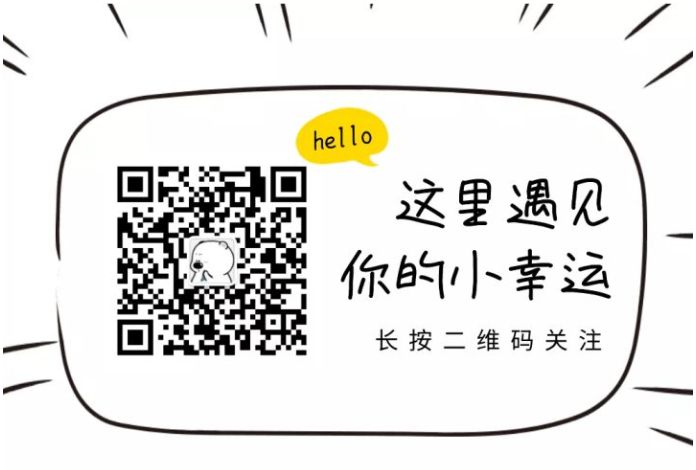可以将文章内容翻译成中文,广告屏蔽插件可能会导致该功能失效(如失效,请关闭广告屏蔽插件后再试):
问题:
I cannot figure how to implement onKeyPreIme(int keyCode, KeyEvent event) in a Fragment.
@Override
public boolean onKeyPreIme(int keyCode, KeyEvent event) {
if (keyCode == KeyEvent.KEYCODE_BACK &&
event.getAction() == KeyEvent.ACTION_UP) {
// do your stuff
return false;
}
return super.dispatchKeyEvent(event);
}
I tried a lot but nothing works. Also, I could not find anything on Google or Stack Overflow. I would like to perform an action when the back key is pressed and the softkeyboard is up. Setting an onKeyListener on my EditTexts did not work, since KeyEvent.KEYCODE_BACK is not called when the soft keyboard is up. I appreciate any help and source code.
回答1:
I was able to implement onKeyPreIme by sub-classing my EditText views that were related to the keyboard input. The goal is to make a custom lock screen that the user must enter a pass code or leave the application. When the user taps the "keyboard down" button the keyboard does not disappear.
Make sure to create a separate .java file for the subclassed EditText. Additionally, be sure to use the constructor in the code below (must pass AttrubuteSet).
I realize that my implementation of onKeyPreIme may not match yours, however it does demonstrate how to intercept the keyboard events before the InputMethodManager does it's thing.
I hope this helps.
Screenshot UserLockActivity

EditText Subclass
public class LockEditText extends EditText {
/* Must use this constructor in order for the layout files to instantiate the class properly */
public LockEditText(Context context, AttributeSet attrs)
{
super(context, attrs);
// TODO Auto-generated constructor stub
}
@Override
public boolean onKeyPreIme (int keyCode, KeyEvent event)
{
// Return true if I handle the event:
// In my case i want the keyboard to not be dismissible so i simply return true
// Other people might want to handle the event differently
System.out.println("onKeyPreIme " +event);
return true;
}
}
UserLockActivity.java
public class UserLockActivity extends Activity
{
private LockEditText editText1;
private LockEditText editText2;
private LockEditText editText3;
private LockEditText editText4;
@Override
protected void onCreate(Bundle savedInstanceState)
{
super.onCreate(savedInstanceState);
setContentView(R.layout.activity_user_lock);
editText1 = (LockEditText) findViewById(R.id.lock_text_1);
editText2 = (LockEditText) findViewById(R.id.lock_text_2);
editText3 = (LockEditText) findViewById(R.id.lock_text_3);
editText4 = (LockEditText) findViewById(R.id.lock_text_4);
setupTextChangedListener(editText1);
setupTextChangedListener(editText2);
setupTextChangedListener(editText3);
setupTextChangedListener(editText4);
// A method to bring out the keyboard when the view appears
setFocusOnEditText(editText1);
}
public void setFocusOnEditText(LockEditText editText)
{
editText.clearFocus();
editText.requestFocus();
InputMethodManager imm = (InputMethodManager) getSystemService(Context.INPUT_METHOD_SERVICE);
imm.toggleSoftInput(InputMethodManager.SHOW_FORCED,0);
}
public void setupTextChangedListener(LockEditText editText)
{
editText.addTextChangedListener(new TextWatcher()
{
@Override
public void onTextChanged(CharSequence s, int start, int before, int count)
{
}
@Override
public void afterTextChanged(Editable arg0)
{
// TODO Auto-generated method stub
}
@Override
public void beforeTextChanged(CharSequence arg0, int arg1,int arg2, int arg3)
{
// TODO Auto-generated method stub
}
});
}
}
activity_user_lock.xml Layout file
<RelativeLayout xmlns:android="http://schemas.android.com/apk/res/android"
xmlns:tools="http://schemas.android.com/tools"
android:layout_width="match_parent"
android:layout_height="match_parent"
android:paddingBottom="@dimen/activity_vertical_margin"
android:paddingLeft="@dimen/activity_horizontal_margin"
android:paddingRight="@dimen/activity_horizontal_margin"
android:paddingTop="@dimen/activity_vertical_margin"
tools:context=".UserLockActivity" >
<TextView
android:id="@+id/main_lock_text"
android:layout_width="wrap_content"
android:layout_height="wrap_content"
android:layout_centerHorizontal="true"
android:layout_alignParentTop="true"
android:paddingTop="60dp"
android:paddingBottom="20dp"
android:text="@string/enter_passcode"
android:textAppearance="?android:attr/textAppearanceLarge" />
<LinearLayout
android:id="@+id/lock_input_layout"
android:layout_width="match_parent"
android:layout_height="60dp"
android:layout_below="@+id/main_lock_text"
android:orientation="horizontal" >
<com.yourpackage.yourappname.LockEditText
android:id="@+id/lock_text_1"
android:layout_width="wrap_content"
android:layout_height="wrap_content"
android:layout_gravity="center_horizontal"
android:layout_weight="1"
android:ems="10"
android:inputType="numberPassword"
android:textSize="30sp"
android:gravity="center_horizontal"
android:textStyle="bold" >
</com.yourpackage.yourappname.LockEditText>
<com.yourpackage.yourappname.LockEditText
android:id="@+id/lock_text_2"
android:layout_width="wrap_content"
android:layout_height="wrap_content"
android:layout_gravity="center_horizontal"
android:layout_weight="1"
android:ems="10"
android:inputType="numberPassword"
android:textSize="30sp"
android:gravity="center_horizontal"
android:textStyle="bold" >
</com.yourpackage.yourappname.LockEditText>
<com.yourpackage.yourappname.LockEditText
android:id="@+id/lock_text_3"
android:layout_width="wrap_content"
android:layout_height="wrap_content"
android:layout_gravity="center_horizontal"
android:layout_weight="1"
android:ems="10"
android:inputType="numberPassword"
android:textSize="30sp"
android:gravity="center_horizontal"
android:textStyle="bold">
</com.yourpackage.yourappname.LockEditText>
<com.yourpackage.yourappname.LockEditText
android:id="@+id/lock_text_4"
android:layout_width="wrap_content"
android:layout_height="wrap_content"
android:layout_gravity="center_horizontal"
android:layout_weight="1"
android:ems="10"
android:inputType="numberPassword"
android:textSize="30sp"
android:gravity="center_horizontal"
android:textStyle="bold" >
</com.yourpackage.yourappname.LockEditText>
</LinearLayout>
<TextView
android:id="@+id/textView1"
android:layout_width="wrap_content"
android:layout_height="wrap_content"
android:layout_below="@+id/lock_input_layout"
android:layout_centerHorizontal="true"
android:text="text" />
</RelativeLayout>
回答2:
This is my solution and it works really well for me, but everyones needs are different.
First i subclassed EditText and hooked up a listener (Google should make this the default)
public class ListenerEditText extends EditText {
private KeyImeChange keyImeChangeListener;
public ListenerEditText(Context context, AttributeSet attrs) {
super(context, attrs);
}
public void setKeyImeChangeListener(KeyImeChange listener){
keyImeChangeListener = listener;
}
public interface KeyImeChange {
public void onKeyIme(int keyCode, KeyEvent event);
}
@Override
public boolean onKeyPreIme (int keyCode, KeyEvent event){
if(keyImeChangeListener != null){
keyImeChangeListener.onKeyIme(keyCode, event);
}
return false;
}
}
Then you can attach a listener from anywhere like so:
myListenerEditText.setKeyImeChangeListener(new KeyImeChange() {
@Override
public void onKeyIme(int keyCode, KeyEvent event) {
// All keypresses with the keyboard open will come through here!
// You could also bubble up the true/false if you wanted
// to disable propagation.
}
});
回答3:
I was not able to figure out how to implement the onKeyPreIME, but I was able to perform an action after the keyboard disappeared with the following code:
You man need to change comparison heightDiff > 200. This comparison worked for me because I had a scrollview.
fragmentView.getViewTreeObserver().addOnGlobalLayoutListener(new OnGlobalLayoutListener() {
@Override
public void onGlobalLayout() {
if(getView() != null){
int heightDiff = getView().getRootView().getHeight() - getView().getHeight();
if (heightDiff < 200) {
rlupdate.setVisibility(RelativeLayout.VISIBLE);
}
else {
rlupdate.setVisibility(RelativeLayout.GONE);
}
}
}
});
回答4:
this is a more full code of answer by Deminetix.
i have used the answer by Deminetix to filter handheld barcode reader on android and have the result.
to make it usable on a screen only with buttons i have added a EditText with android:textColor="#FF000000" android:background="#00FFFFFF" android:enabled="false"
disabled EditText still gets keyboard events.
optionally i could hide the software keyboard using the following but after disabling the EditText it was not required.
//InputMethodManager imm = (InputMethodManager) getSystemService(Context.INPUT_METHOD_SERVICE);
//imm.showSoftInput(textPatientId, InputMethodManager.HIDE_IMPLICIT_ONLY);
MainActivity.java:
package com.doodkin.keyboardtest;
import com.doodkin.keyboardtest.ListenerEditText.KeyImeChange;
import android.os.Bundle;
import android.app.Activity;
import android.text.Editable;
import android.text.TextWatcher;
import android.text.method.KeyListener;
import android.util.Log;
import android.view.InputDevice;
import android.view.KeyEvent;
import android.view.Menu;
import android.view.View;
import android.view.View.OnKeyListener;
import android.widget.EditText;
public class MainActivity extends Activity {
private static final String TAG = "keyboard test";
//private EditText editText1;
ListenerEditText editText1=null;
public String barcodebuffer="";
@Override
protected void onCreate(Bundle savedInstanceState) {
super.onCreate(savedInstanceState);
setContentView(R.layout.activity_main);
editText1 = (ListenerEditText) findViewById(R.id.editText1);
editText1.setKeyImeChangeListener(new KeyImeChange() {
@Override
public boolean onKeyIme(int keyCode, KeyEvent event) {
String deviceName=event.getDevice().getName();
int keyboardType=event.getDevice().getKeyboardType();
int indexof=deviceName.indexOf("USB");
if(indexof!=-1 && keyboardType==InputDevice.KEYBOARD_TYPE_NON_ALPHABETIC)
{
if(event.getKeyCode()==KeyEvent.KEYCODE_ENTER)
{
if(barcodebuffer!="")
{
Log.d(TAG, "filterBarcodeKeys Chars Flush: " + barcodebuffer );
barcodebuffer="";
}
}
else
{
barcodebuffer+=Character.toString((char)event.getUnicodeChar());
//Log.d(TAG, "filterBarcodeKeys Char: " + Character.toString((char)event.getUnicodeChar()) );
}
return true;
}
return false;
}
});
}
@Override
public boolean onCreateOptionsMenu(Menu menu) {
// Inflate the menu; this adds items to the action bar if it is present.
getMenuInflater().inflate(R.menu.main, menu);
return true;
}
}
activity_main.xml:
<RelativeLayout xmlns:android="http://schemas.android.com/apk/res/android"
xmlns:tools="http://schemas.android.com/tools"
android:layout_width="match_parent"
android:layout_height="match_parent"
android:paddingBottom="@dimen/activity_vertical_margin"
android:paddingLeft="@dimen/activity_horizontal_margin"
android:paddingRight="@dimen/activity_horizontal_margin"
android:paddingTop="@dimen/activity_vertical_margin"
tools:context=".MainActivity" >
<TextView
android:id="@+id/textView1"
android:layout_width="wrap_content"
android:layout_height="wrap_content"
android:text="@string/hello_world" />
<com.doodkin.keyboardtest.ListenerEditText
android:id="@+id/editText1"
android:layout_width="match_parent"
android:layout_height="wrap_content"
android:layout_alignLeft="@+id/textView1"
android:layout_below="@+id/textView1"
android:ems="10" >
<requestFocus />
</com.doodkin.keyboardtest.ListenerEditText>
<Button
android:id="@+id/button1"
android:layout_width="wrap_content"
android:layout_height="wrap_content"
android:layout_alignLeft="@+id/editText1"
android:layout_below="@+id/editText1"
android:layout_marginTop="69dp"
android:text="Button" />
</RelativeLayout>
ListenerEditText.java:
package com.doodkin.keyboardtest;
import android.content.Context;
import android.util.AttributeSet;
import android.view.KeyEvent;
import android.widget.EditText;
/*
* example:
myListenerEditText.setKeyImeChangeListener(new KeyImeChange() {
@Override
public boolean onKeyIme(int keyCode, KeyEvent event) {
// All keypresses with the keyboard open will come through here!
// You could also bubble up the true/false if you wanted
// to disable propagation.
}
});
*/
public class ListenerEditText extends EditText {
private KeyImeChange keyImeChangeListener;
public ListenerEditText(Context context, AttributeSet attrs) {
super(context, attrs);
}
public void setKeyImeChangeListener(KeyImeChange listener){
keyImeChangeListener = listener;
}
public interface KeyImeChange {
public boolean onKeyIme(int keyCode, KeyEvent event);
}
@Override
public boolean onKeyPreIme (int keyCode, KeyEvent event){
if(keyImeChangeListener != null){
return keyImeChangeListener.onKeyIme(keyCode, event);
}
return false;
}
}



